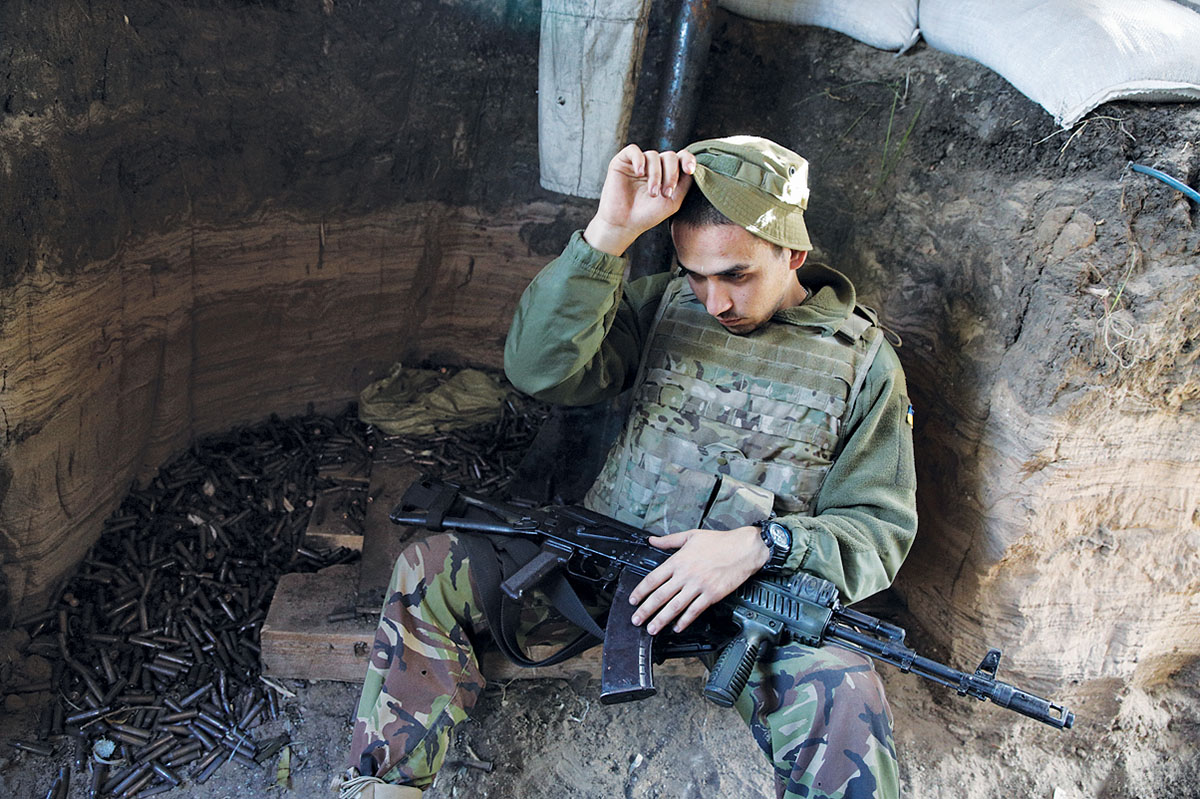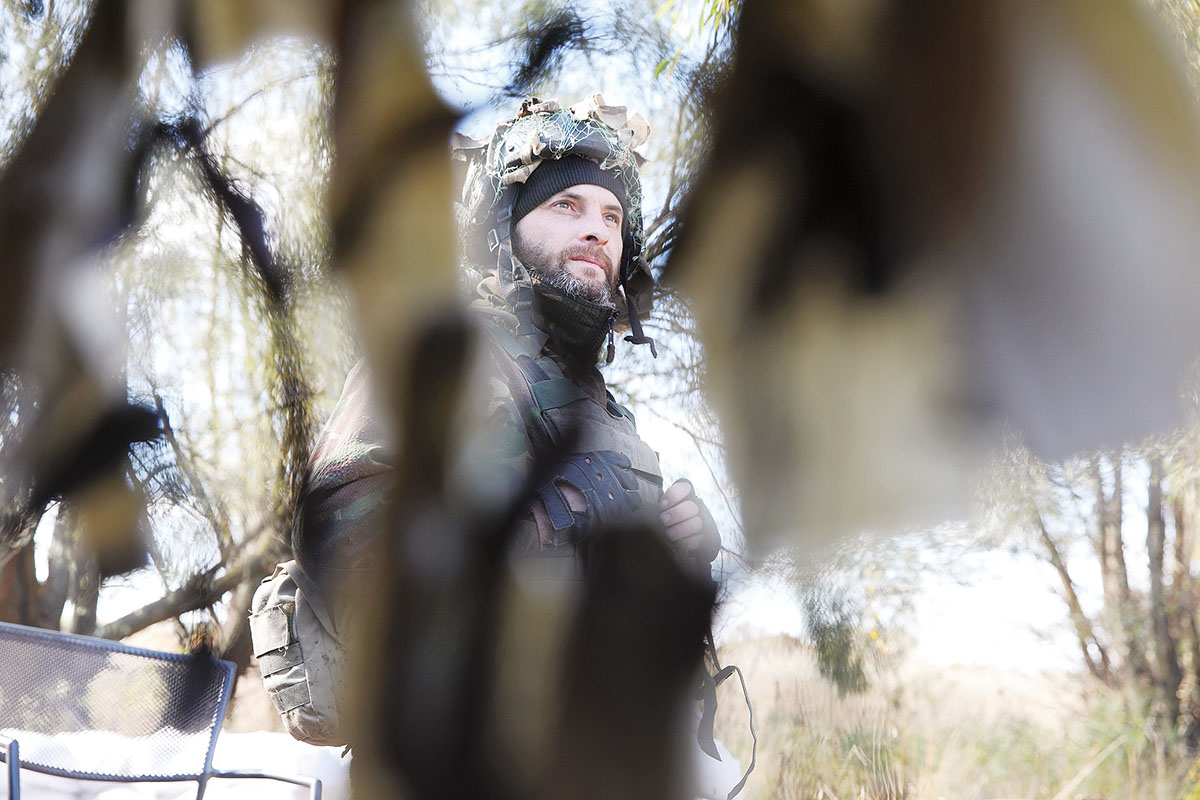AVDIYIVKA, Ukraine — Hundreds of thousands of people in the area just to the north of the Russian-occupied city of Donetsk rely on the Donetsk water filtration station for clean water.
Located just to the east of the government-held city of Avdiyivka, 580 kilometers southeast of Kyiv, the station supplies water to the populations on both sides of the front line.
But the station itself stands in no-man’s land between Ukrainian army positions and those of the Russian-led forces, and is often caught in the crossfire when fighting breaks out in the area. In 2017 alone, the station has been damaged and has stopped working around a dozen times.
Entire cities in the war zone, primarily Avdiyivka with 35,000 residents, are dependent on its water supplies, as are as parts of Russian-occupied Donetsk and Yasynuvata. When the fighting surges, they are repeatedly pushed to the brink of a humanitarian disaster.
The opposing lines are just a few hundred meters from the station — and neither the Ukrainian nor the Russian-led forces will agree to retreat, despite mediation by international agencies such as the Organization for Security and Cooperation in Europe, or OSCE.
Each time the station is damaged, a local cease-fire is arranged so that teams can enter to repair it and relaunch it. And even though neither side gives security guarantees, the civilian staff of the station continue to turn up for work — in the midst of war.
Such is the importance of the plant.
The station itself presents an environmental danger to the area: According Ukraine’s Ministry of Ecology and Natural Resources,, should the station’s chlorine storage tanks be breached by shelling, the resulting chemical contamination would pollute the soil and groundwater of the area.

A Ukrainian soldier sits in a dugout at combat positions near the Donetsk filtration station east of Avdiyivka in Donetsk Oblast, some 580 kilometers southeast of Kyiv, on Oct. 10. (Volodymyr Petrov)
Sniper duels
The Ukrainian troops positioned in close proximity to the station say they cannot move back as the enemy would not hesitate to advance in return, and they still have the city of Avdiyivka behind their backs to defend.
Currently, a reconnaissance company of the 72nd Mechanized Brigade — dubbed the “Black Brigade” for its fearsome combat reputation — fends off Russian-led forces east of Avdiyivka, along the deserted strategic H‑20 road running just to the west of the station.
Ukrainian reconnaissance troops now man an area that used to be a wealthy private housing estate near the station’s reservoir ponds. Most of the houses have now been reduced to scorched debris by enemy artillery fire, and the soldiers take shelter the few relatively intact basements that remain.
One of the key features of the front line in this area is a winding set of trenches that runs east towards the enemy line. It is nicknamed the “mole rat,” as soldiers must scurry along the trenches, heads down to avoid presenting a target in what is a live-fire zone, like a rodent through tunnels.
From the “Mole-rat” trenches, Ukraine’s soldiers can see the Donetsk filtration station just a few hundred meters away, with its chimney rising high into the sky, to the right of their dugouts.
At a machine-gun post in the trenches, a Dragunov SVD sniper rifle with a high-power scope sight sits locked and loaded: Here, the company’s sniper platoon takes turns on guard duty, in four-hour shifts.
“In the daytime, we don’t have much work to do,” says sniper Roman Gurzhenko as he scans the scrubland of the “gray zone” between the lines. “The separs (separatists) are not so dumb that they’ll go over the top to certain death. It’s usually quite enough to simply stay vigilant with a finger on the trigger.”
The men on duty are quite calm, even though the thunderous sounds of heavy explosions and machine gun bursts roll across the trenches from all around: Sporadic fighting breaks out periodically at the hot spots near Avdiyivka. The soldiers say really heavy shelling close to the Donetsk filtration station is now rare. Enemy attacks since the Sept. 1 cease-fire, dubbed the “Back-to-School Ceasefire,” have noticeably declined.
The soldiers believe the Kremlin has probably pressured its proxy forces to avoid endangering the station and triggering an unnecessary humanitarian crisis in the region.
With the use of heavy weapons such as mortars now infrequent, the Donetsk filtration station has not been seriously damaged since late August, and has worked without interruption for the past couple of months.
Meanwhile, the soldiers play a deadly cat-and-mouse game of infiltration of the area around the station. When darkness comes, enemy soldiers make occasional sorties from the occupied village of Kruta Balka east of the “Mole-rat” and approach Ukrainian lines.
“At night, sniper teams need to scan almost every square meter of the gray zone in front of us through thermal vision scopes,” Gurzhenko says. “That’s not an easy thing to do: the eyes get tired very quickly with those devices, and there’s always the temptation to pay less attention when you don’t see anything suspicious for many hours.”
“And don’t forget that our ‘colleagues’ on the other side are out hunting for us every night.”
Sniper duels in the area often cause casualties.
“Recently one of ours took out a militant while his squad was crawling through the bushes to take up an observation position halfway to the village,” adds another sniper, Leonid Kucher.
“His body was left in the open for a couple of days before someone decided to try and recover it. We didn’t stop them.”
“Since then, no one else has messed with us — so far.”

Ukrainian soldier Roman Gurzhenko surveys the front while on duty near the Donetsk filtration station near Avdiyivka in Donetsk Oblast on Oct. 10. (Volodymyr Petrov)
‘Prepare for action!’
Towards the end of the day, the thunder of combat starts to get much louder and closer.
The soldiers, сool-headed and cheerful as usual, get up and stare at the enemy lines through binoculars. If shelling starts, everyone must rush along the line of trenches to take cover inside the nearest of the narrow dugouts that dot the line, which are heavily fortified with a thick layer of concrete.
“Everyone, prepare for action! Man the guns!” the radio sets on the soldiers’ shoulders buzz. A neighboring combat position has just been fired on by Russian-led forces, and Ukrainian machine guns are quickly authorized to return fire.
This time the firefight lasts only for a couple of minutes. After a several sustained machine-gun bursts from neighboring positions, the fighting dies down steadily, and the soldiers are given the order to cease firing.
Luckily, there are no casualties this time.
“That happens here from time to time as well,” says medic Andriy Aliamskyi as he walks along the trenches. “The militants just probe our defenses, checking if we have relocated our firing holes. In return, our guys strike back to let them know we’re still paying attention.”
“That’s just another day in action.”
Day after day, the fighting around the Donetsk filtration station goes on, with no end in sight. Neither side is in a position to knock the enemy back and take the crucial asset under their control.
The reconnaissance company deployed near the station will soon leave the area: During his surprise visit to Avdiyivka on Oct. 22, Ukrainian President Petro Poroshenko said the 72nd Brigade would be withdrawn from the war zone, after a year of steadfastly defending the front-line city.
But the fighting for the station continues to take a toll on the Black Brigade’s scouts. Mykola Larin, one of the soldiers who was manning the “Mole-rat” trenches when the Kyiv Post visited them on Oct. 10, was killed just six days later in an enemy mortar attack.
He was only 25.
Find more photos of Ukriane’s combat lines near the Donetsk filtration station in a special gallery by Volodymyr Petrov
